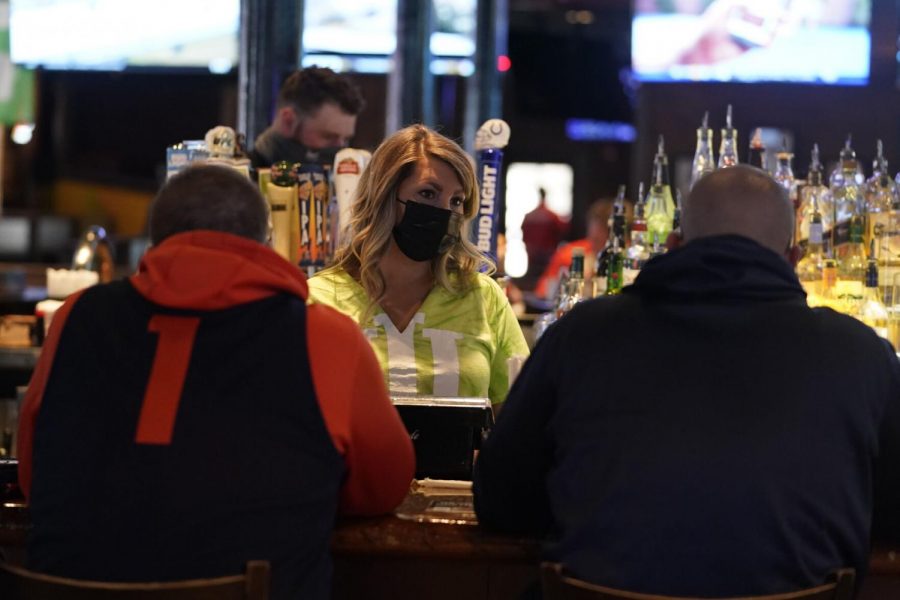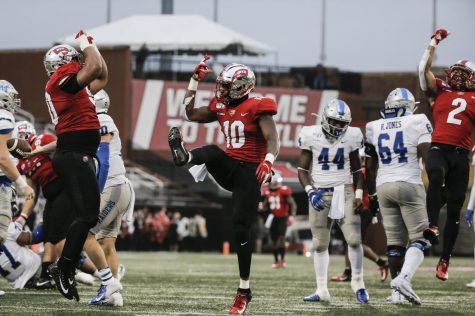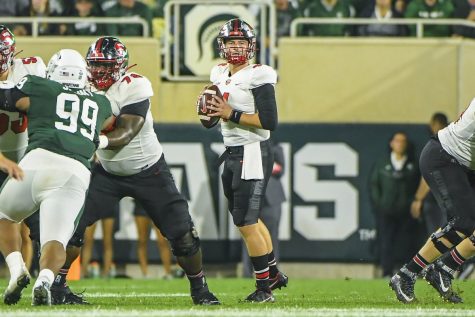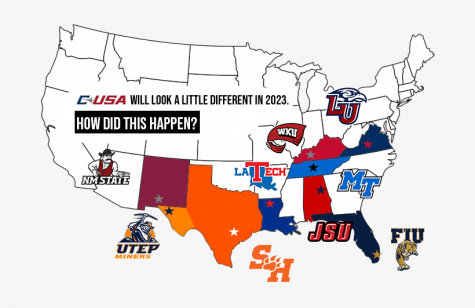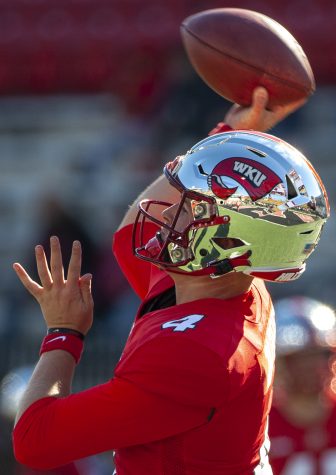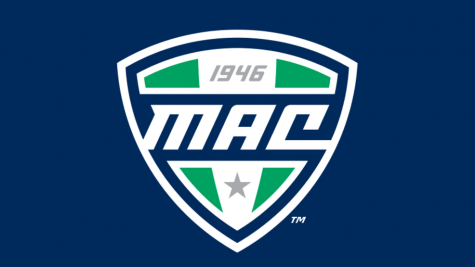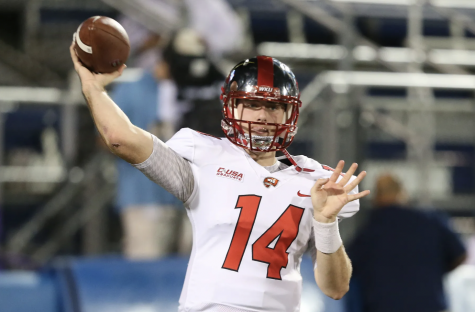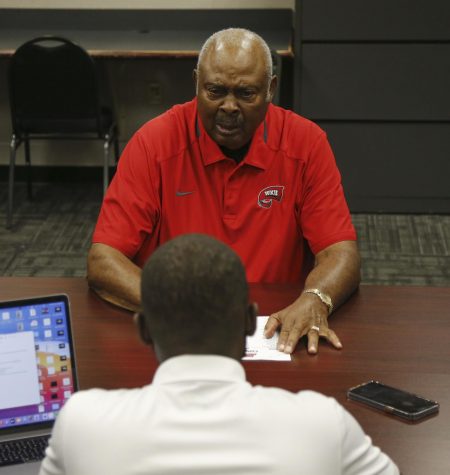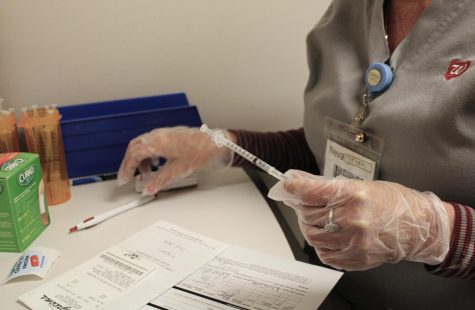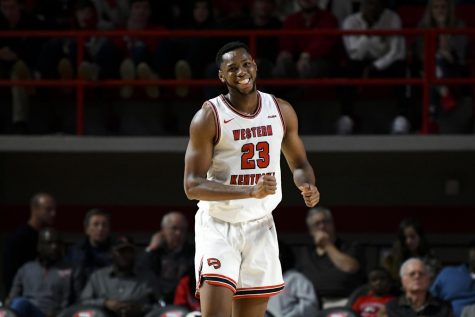Unique NCAA Tournament unites fans from each corner of the country
March 23, 2021
INDIANAPOLIS — Even on the lively streets of downtown Indianapolis, it was easy to spot Tyler Conroy, a 25-year-old native of Dunellen, New Jersey.
He wore a bright red suit jacket, riddled with rhinestones. Underneath was a Rutgers jersey, with “Knights,” scripted across his chest. Ric Flair had competition as Conroy strutted down the street.
Conroy was dressed for the occasion. He was hours away from experiencing a moment that was percolating before his parents had even considered having him. He lived and breathed Scarlet Knights’ basketball. Later that evening, he would watch Rutgers play in its first NCAA Tournament game in more than 30 years.
Like the thousands of other fans who paraded the four-block radius between Bankers Life Fieldhouse and Lucas Oil Stadium between games throughout the weekend, Conroy wasn’t going to miss the opportunity for anything in the world.
“It means everything. Everything,” he said. “… The NCAA Tournament, if you’re a sports fan, it’s something that you fill out the brackets, and you pick all your teams and this and that. But when you’re a Rutgers fan, we’ve actually never got to pick our team. Ever.”
Tyler and his family drove more than 10 hours to witness Rutgers history. A chunk of Indianapolis’ weekend inhabitants drove or flew from just about every corner of the country to watch their favorite teams come together for the tournament. Rutgers fans were merely a fraction of the turnout. Every fan had storied ties, and there wasn’t a single participating team without representation.
A sea of orange poured out of Bankers Life Fieldhouse as Oregon State ran away with an upset win over Tennessee on Friday. Half of the crowds’ heads were high. The other half looked sick to its stomach.
It was in that moment that Lane Harris, who’s been a “Beaver Believer” for more than 25 years, knew his flight from the west coast to the midwest was worth every penny.
“I would’ve come no matter what,” Harris said. “…I’m a supporter ‘til I die.”
Just when it seemed like at least one fan base wasn’t dedicated enough to travel hundreds of miles for its team, a plethora of hoodies, jerseys and everything in between popped up just before the game started. Harris hadn’t seen an Oregon State fan around town since he’d arrived just a day before. As he walked to the arena, he’d seen an outpouring of fans that overpowered anything he’d ever seen outside of Corvallis, Oregon.
If a team was playing that day, there was an army behind it in the streets. There were constant high-fives and mild-mannered heckles. There were seemingly more college basketball fan bases in one place than in any other instance in history.
In past years, tournament rounds and games typically have been broken up into different weekends and sites. Due to COVID-19, much of what fans know changed in order to host a season, and more specifically this year’s NCAA Tournament.
It’s forced fans of teams who otherwise might never see each other into one general vicinity in and around Indianapolis. Coley Kyman, father of UCLA sophomore guard Jake Kyman, believes maybe the structure shouldn’t be temporary.
“I don’t know if there’s anything like this,” he said. “I think the NCAA may want to take a peek at doing this again. I understand the money and the opportunity to go to different sites, but having everything in one place is pretty special.
“And just to talk to different people from different teams, different cities and states and their fan base. Cheering for each other, cheering against each other. It’s pretty incredible. The only thing I would equate it to is something like being in an Olympic village.”
After more than 700 days without an NCAA Tournament game, nothing was going to keep fans — people from Indiana or diehards from around the nation — from such an opportunity. Even a pandemic.
Countless fans who permeated the downtown area received at least a single dose of the vaccine. Others opted for a test. At the very least, those who were really itching wore two masks.
Kyman compared the limited venues and the fans who occupy them to a “glorified high school game.” It was a refreshing step for players and family members who were among fewer than 100 fans in their team’s crowd throughout the regular season.
But Kyman and others didn’t just feel the embrace of fans who traveled from their hometowns. Indiana residents welcomed visitors with open arms. The state has fostered a deep culture around hoops for more than a century. It only made sense to host the tournament in such a place, and for locals to treat guests like first cousins.
By the end of the weekend, Indianapolis emerged as a melting pot. Fans of each of the 68 programs in unison, all coming together to see their teams compete. It was a phenomenal experience for first timers. And it was a humbling one for anyone who understands everything that athletes, coaches and fans of the game have endured over the past year.
“Most of the boys that I’ve seen and the parents that I’ve talked to are just grateful to be here,” Kyman said. “It’s the gratefulness of it. Just knowing that this can be taken away at any second instead of just the expectation of being here. … That’s probably the most different thing. A heart filled of gratefulness is definitely something you’d see more this year than in the past.”

